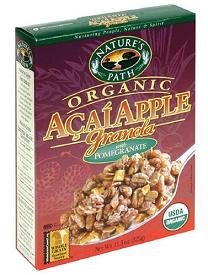Every business eventually gets stale. If new ideas, processes, products are not introduced then it invites competitors who are more creative to steal your customers.
 At one time cereal shelves were filled with only a handful of products: corn flakes, puffed wheat, Grape-Nuts Flakes, Cheerios, and a very few others. In late 1949 and the early 1950s sugar cereals began to proliferate: Sugar Crisp, Sugar Corn Pops, Sugar Krinkles, Sugar Frosted Flakes, Sugar Smacks, Trix, and Rice Honeys, for example.
At one time cereal shelves were filled with only a handful of products: corn flakes, puffed wheat, Grape-Nuts Flakes, Cheerios, and a very few others. In late 1949 and the early 1950s sugar cereals began to proliferate: Sugar Crisp, Sugar Corn Pops, Sugar Krinkles, Sugar Frosted Flakes, Sugar Smacks, Trix, and Rice Honeys, for example.
In the next few decades hundreds of different cereals came out and instead of just dominating shelves, cereals dominated entire aisles. In 1989 Kellogg’s came out with Heartwise and many other manufacturers began pushing whole grain and “healthy” cereals.
Today one can find practically every fruit, nut or spice in the product mix: marshmallows, bananas, dates, raisins, walnuts, apples, cinnamon, peanut butter, cranberries, cocoa, blueberry muffins, caramel, pecans, granola, and more than a thousand others.
Brainstorming is not needed to come out with a new product mix, one can simply combine a few fruit or nut names and viola! one has a new cereal product: Acai Apple Granola, agave strawberry cocoa, Apple Caramel Pecan Crunch, banana cream caramel waffle flakes, and so on.
Where brainstorming might help, for example, is coming up with new packaging to help one product stand out from the crowd, let’s say a star-shaped box for oatmeal galaxy flakes (which are also star-shaped).
Or perhaps boxes that when fit together make a puzzle.
The problem with brainstorming sessions is that unless the session moderator is able to stifle judgment, participants may find it difficult to come up with ideas or suggestions to solve a problem.
I have been in many brainstorming sessions and I find that a judgment-penalty-jar helps to keep the negative comments or judgments down to a minimum.
This is how it works: all participants are handed approx 40 poker chips with each chip standing for 25 cents (or any other amount set by the moderator). A negative opinion jar is set in the middle of a table – and everyone is informed that the jar starts off with $100 (or whatever amount the company want to ante with). Any time a participant utters a negative statement, he must put a chip in the jar.
The negative comments can be put on a whiteboard so everyone knows what not to say during the session: here are some samples: that won’t work, we can’t do that, that’s a stupid idea, I don’t like that, why would we do that? that’s silly, that’s crazy, our organization is not built for that, we’ve never done that before, we’ve tried that before, we’re not set up for that, it’s too expensive, it’s too cheap, too hard, too easy, we can’t make money from that, market research shows …, do you have any evidence that …, but our focus group showed different results, we’ve always done it the other way, etc.
The moderator should put all participant names on a separate board and put a checkmark every time someone has an idea, no matter how crazy. Every ten minutes, the idea generation process is suspended and everyone votes for who had the craziest, most absurd suggestion during that ten minute period. That name is then put into the jar. At the end of the brainstorming session the person with the highest number of checkmarks (overall ideas) and the person who had the highest number of stupid ideas share equally in whatever is in the judgment jar.
Those participants who lack chips because they had negative comments must come up with money for the missing chips. This ensures that nay-sayers will eventually not show up at sessions.
In this manner, I have been at sessions where 10 people generated more than a 500 ideas and more in less than an hour.
What to do with all those ideas generated will be for a future post.

